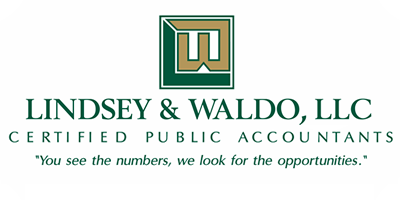So, last week I wrote you about your holiday spending, and making sure that you don’t find yourself caught up in all the merchandising and hooha — specifically of the retail variety. (Let’s ALL get caught up in the transcendent beauty of the season, shall we?)
And it made me think about some clients that I’ve walked with over the years who fought their way — successfully — out of debt that would have crushed other families.
How did they do that? Today I’ll tell you.
But here’s something they did NOT do: Borrow money to pay off more borrowed money (and call it savings).
That only works for Uncle Sam, apparently.
And speaking of Congress and debt — included in the upcoming highway funding bill for Congress is a small provision that would require the IRS to use private debt collection agencies to go after IRS debt. In my opinion, that would be a problem for many, despite the jobs it might create for these agencies. Treasury did a recent studythat showed that the IRS is better at this than private agencies, and those agencies would naturally be more aggressive.
So, let’s be sure to avoid that IRS debt as well, ok? 🙂
By the way, with debt reduction, I’m a big fan of automation — but not in all instances. For example, do NOT “automate” your tax preparation process with off-the-shelf software. Especially of the “free” variety. We have to clean up so many mistakes made by these products (and their users!), that I cannot, in good conscience, recommend them.
Yes, I’m obviously biased. But the facts are the facts. Take a gander at this, for just one small example: http://bit.ly/1iOy9A7
Alrighty then … let’s talk about how my clients get out of debt.
Lindsey’s 6 Ways to Climb Out of Your Credit Card Debt
“What simple action could you take today to produce a new momentum toward success in your life?” – Anthony Robbins
The average credit card balance for an American household as of August of this year was $7,529, which is an increase over years previous and not something that any of us really would like to see increase further. And that counts the households that carry no debt, so the figure for those who *do* is even worse.
So, you may be in a better situation … it may also be worse. So, to answer the questions we often get around here from clients facing tough times, I’ve put together a step-by-step process which we often help people work through.
1. First, pay more than the minimums
If you only pay the minimum payment each month, your credit card debt could continue to INCREASE, even if you completely stop using your card. This is called “negative amortization”–where you think you are paying on your debt but the additional fees and finance charges are more than the minimum payment. The bottom line is: Pay more than your minimum or you will eventually be in debt over your head.
2. Create an automated system
With online banking and automatic payment options, there are GREAT tools for ensuring you don’t mess up because of administrative chaos. If you feel you can’t manage all your bills by pen and paper, there are several good software programs available for keeping track of your financial records.
In fact, I recommend that you automate a payment ABOVE the minimum monthly payment, just to be certain that you start getting ahead of the game. Those minimum payments are rigged against you, and the only way to get ahead is to … get ahead. I have some more thoughts on automation in a moment.
3. Yes, you can negotiate
No, you do not need to be an attorney or other professional to negotiate with your credit card company (negotiating with the IRS, on the other hand, is a very different story!). The rising amount of consumer debt in this country has made creditors realize that they need to be more understanding of their customers — if they hope to get any money back. If you file bankruptcy they are only going to get pennies on the dollar, so they are willing to make deals.
4. Proactively contact your creditors — in writing
Open communication always helps. Usually credit card companies get ignored and end up sending delinquent files to a collections agency. So they’ll actually appreciate your openness in contacting them and may be more understanding of your situation. Proactively dealing with your credit card debt rather than hiding will not only help your financial problem, but will make you feel better about yourself as well.
5. Develop a simple tracking system
If you are not able to pay the full amount of your credit each month, you still should still pay something to stay on top of it. You should work off a written budget so you know exactly where you stand. Some experts suggest that you divide your monthly debt budget by the percentage each bill makes of the total and pay that amount.
Here’s an example: If you owe a total of $1,000, and one credit card is $800 and the other is $200, and you only have $100 available to pay for that month… You should pay $80 on the $800 balance, and $20 on the $200 balance. This way you are reducing each debt by the same percentage.
6. Do NOT be intimidated
No matter how forthcoming and honest you are, some creditors have been taught to be mean and downright nasty. Hang in there and don’t let this tactic intimidate you.
Lastly–don’t let the IRS be one of those creditors. Let us help you this tax season, and THAT will be one less creditor to worry about, I assure you!
Warmly,
Richard Lindsey
251-633-4070
Lindsey & Waldo, LLC
